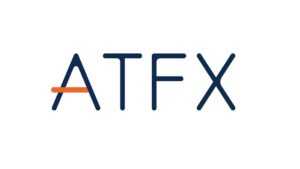Gold has been a valuable asset for thousands of years. Many investors add it to their portfolios for good reasons. Gold can protect your money when the economy is uncertain and help balance out your investments. It’s not affected by the same things that impact stocks and bonds, which makes it a smart choice for many people.

Adding gold to your investments is easy. You can buy gold coins or bars, invest in gold mining companies, or put money in gold exchange-traded funds (ETFs). Each way has its own good points. The key is to pick the method that fits your goals and how much risk you’re okay with.
We think gold can be a great addition to many portfolios. It’s important not to go overboard, though. Most experts say to keep gold at 5% to 10% of your total investments. This amount can give you the benefits of gold without putting too much of your money in one place.
Key Takeaways
- Gold can protect your investments during uncertain economic times
- There are several ways to invest in gold, including coins, stocks, and ETFs
- Experts suggest keeping gold to 5-10% of your investment portfolio
⇒ Open your account now with ICM Capital and trade Live on Gold with a global broker who holds international licenses and is authorized by the Abu Dhabi Global Market UAE
⇒ Open your account now with Equiti and trade Live on Gold with a global broker who holds international licenses and is authorized by Securities and Commodities Authority of the UAE.
Understanding Gold as an Investment

Gold has been a valuable asset for thousands of years. It serves as a store of wealth, a medium of exchange, and a tangible asset. Let’s explore gold’s role in investing and its unique characteristics.
Historical Significance
Gold has been prized since ancient times. It was used as currency and jewelry in many civilizations. The gold standard linked paper money to gold reserves until the 1970s. This history gives gold a special status in finance.
Gold has kept its value over long periods. It often rises when other assets fall. This makes it useful for protecting wealth during tough times.
We can still see gold’s impact today. Central banks hold large gold reserves. Many investors view it as a safe haven.
Gold’s Intrinsic Value
Gold has qualities that make it valuable. It doesn’t rust or corrode. It’s easy to melt and shape. Gold is rare but not too scarce. These traits make it useful for jewelry and some industrial uses.
Gold’s beauty and durability add to its worth. People have desired it for centuries. This long-standing appeal supports its value.
Unlike stocks or bonds, gold doesn’t produce income. Its value comes from what buyers will pay for it. This can make its price volatile at times.
Asset Classification
Gold is a unique asset class. It’s a commodity, but it acts differently from other raw materials. Gold doesn’t get used up like oil or wheat.
We classify gold as a tangible asset. You can hold it in your hand. This sets it apart from stocks, bonds, or cash.
Gold often moves differently from other investments. When stocks drop, gold may rise. This makes it useful for diversifying a portfolio.
Investors can buy physical gold or gold-related securities. Each option has its own pros and cons. The best choice depends on an investor’s goals and situation.
⇒ Open your account now with ICM Capital and trade Live on Gold with a global multi-regulated broker and authorized by the Abu Dhabi Global Markets (ADGM) ⇐
Forms of Gold Investment

Gold offers several investment options for those looking to add it to their portfolios. These include physical gold, gold-backed funds, and gold-related securities. Each form has its own advantages and considerations.
Physical Gold
Physical gold comes in various forms like coins, bars, and bullion. Gold coins are popular for their historical value and ease of storage. Gold bars come in different sizes, from small 1-ounce bars to large 400-ounce bars. Bullion refers to gold in any form that is at least 99.5% pure.
Pros of owning physical gold:
- Direct ownership
- No counterparty risk
- Can be stored at home or in a vault
Cons to consider:
- Storage and insurance costs
- Potential for theft
- May be hard to sell quickly
Gold ETFs and Mutual Funds
Gold ETFs and mutual funds offer a way to invest in gold without owning it physically. These funds typically track the price of gold and can be bought and sold like stocks.
Don’t miss out: ⇒ Blog ⇒ YouTube Videos ⇒ Telegram Channel
Key points about gold funds:
- Easy to buy and sell
- Low storage costs
- Professionally managed
- May have annual fees
Popular gold ETFs include SPDR Gold Shares (GLD) and iShares Gold Trust (IAU). Mutual funds like Fidelity Select Gold Portfolio invest in gold-related companies.
- Open your account now with ICM Capital and trade Live on Gold with a global broker who holds international licenses and authorized by the Abu Dhabi Global Market UAE.
- Open your account now with Equiti and trade Live on Gold with a global broker who holds international licenses and authorized by Securities and Commodities Authority of the UAE.
Gold Mining Stocks and Gold Futures
Investing in gold mining stocks means buying shares of companies that mine and produce gold. This can offer leverage to gold prices, as mining stocks often move more than the price of gold itself.
Gold futures are contracts to buy or sell gold at a set price on a future date. They’re used by traders to speculate on gold prices or hedge other investments.
Points to remember:
- Mining stocks can be volatile
- Company performance affects stock price
- Futures require more expertise
- High potential for gains and losses
We recommend researching carefully before investing in mining stocks or futures, as they can be riskier than other gold investments.
Gold and Portfolio Diversification

Adding gold to an investment mix can help spread risk and protect against market swings. It offers unique benefits that can strengthen a portfolio’s overall health.
Hedge Against Market Volatility
Gold often moves differently from stocks and bonds. When markets get rocky, gold prices may go up as investors look for safer places to put their money. This can help balance out losses in other parts of a portfolio.
Gold has shown its value during past financial crises. In 2008, when stocks dropped sharply, gold prices went up. This shows how it can act as a cushion when other investments fall.
We think including some gold in a portfolio can provide a buffer against sudden market drops. It’s like insurance for your investments.
“Open your account now with ICM Capital and trade Live on Gold with a global broker who holds international licenses and authorized by the Abu Dhabi Global Market UAE.”
“Open your account now with Equiti and trade Live on Gold with a global broker who holds international licenses and authorized by the Securities and Commodities Authority of the UAE.”
Low Correlation with Other Assets
Gold doesn’t usually move in the same direction as stocks or bonds. This makes it useful for spreading out risk in a portfolio.
When stock prices go down, gold prices might go up or stay steady. This can help smooth out the ups and downs of a portfolio’s value over time.
We’ve seen that gold’s price often moves based on different factors than those affecting stocks. This can include things like inflation fears or political tensions.
Diversification Benefits
Adding gold to a mix of investments can improve a portfolio’s overall health. It helps spread risk across different types of assets.
A well-balanced portfolio might include stocks, bonds, and a small amount of gold. This mix can help manage risk while still aiming for good returns.
We find that even a small amount of gold, like 5-10% of a portfolio, can make a big difference. It can help reduce overall risk without giving up too much potential for growth.
Gold can also act as a hedge against inflation. When prices go up, gold often keeps its value better than paper money.
Economic Resilience of Gold
Gold has proven its ability to weather economic storms. It offers investors a way to protect their wealth during tough times and hedge against various financial risks.
Performance During Economic Downturns
Gold often shines when other investments falter. In past recessions, gold prices have typically risen or held steady. This trend was clear during the 2008 financial crisis. As stocks tumbled, gold prices climbed.
Many investors see gold as a safe bet when markets get shaky. Its value doesn’t depend on a company’s success or a government’s stability. This makes it attractive when other investments look risky.
Gold can help balance out losses in other parts of an investment mix. Adding some gold to a portfolio may smooth out its overall performance during rough patches.
Safe-Haven Asset in Times of Crisis
Gold is known as a safe-haven asset. This means people often buy it when they’re worried about the economy or world events.
During wars, natural disasters, or political unrest, gold prices tend to go up. Investors see it as a way to protect their money. Gold is physical and portable, which adds to its appeal in uncertain times.
Unlike paper money, gold can’t be printed by governments. This makes it a popular choice when people lose faith in currencies or financial systems. Gold’s long history as a store of value gives investors’ confidence.
Inflation and Currency Devaluation
Gold can act as a shield against inflation and currency troubles. When the cost of living goes up quickly, gold often keeps its buying power better than cash.
As currencies lose value, it usually takes more of that currency to buy the same amount of gold. This helps protect wealth from being eaten away by inflation. Gold prices tend to rise when the U.S. dollar weakens against other major currencies.
In countries facing high inflation or unstable currencies, gold is often seen as a reliable way to preserve wealth. It offers a way to hold onto value that isn’t tied to any one country’s economic policies.
Practical Considerations and Risks
Adding gold to your portfolio involves several key factors to think about. We’ll look at how to buy and store gold, the costs of different investment options, and important tax and liquidity issues.
Buying and Storing Physical Gold
Buying physical gold can be done through dealers or banks. We need to be careful about authenticity and purity when making purchases. Storage is a big concern with physical gold. We can keep it at home, but this raises security risks. Bank safe deposit boxes or secure storage facilities are safer options, but they come with ongoing costs.
Gold IRAs let us hold physical gold in retirement accounts. These special accounts have rules about what types of gold we can own and how it’s stored. We must use approved custodians and depositories, which adds to the expense.
Physical gold doesn’t have counterparty risk like some investments do. This means we don’t rely on another party to fulfill a contract. But it also means we’re fully responsible for its safety.
Understanding ETFs and Mutual Fund Costs
Gold ETFs and mutual funds offer an easier way to invest in gold. We don’t have to worry about storage or security. These funds buy and hold gold or invest in gold mining companies.
The main cost for these funds is the expense ratio. This is a yearly fee based on the amount we invest. It covers management and operating costs. ETFs often have lower expense ratios than mutual funds.
Some gold funds use leverage to boost returns. This can increase gains, but it also raises the risk of bigger losses. We need to understand how leverage works before choosing these funds.
Gold funds can give us exposure to gold prices without owning physical metal. This makes buying, selling, and managing our investment simpler.
Tax Implications and Asset Liquidity
The IRS treats physical gold as a collectible. This means we may pay a higher tax rate on gains compared to stocks or bonds. If we hold gold for over a year, we’ll owe long-term capital gains tax, which can be up to 28%.
Gold ETFs and mutual funds might have different tax treatment. Some are taxed like collectibles, while others follow rules for stocks. We should check the specific tax status of any fund we’re considering.
Liquidity is how easily we can turn an asset into cash. Physical gold can be harder to sell quickly, especially in large amounts. We might need to find a buyer and negotiate a price.
Gold ETFs and mutual funds are usually more liquid. We can buy or sell shares easily through a brokerage account. This makes it simpler to adjust our gold holdings based on market conditions or our financial needs.
⇒ Open your account now with ICM Capital and trade Live on Gold with a global multi-regulated broker and authorized by the Abu Dhabi Global Markets (ADGM) ⇐
Frequently Asked Questions
Gold can be a valuable addition to an investment portfolio. It offers unique benefits and potential drawbacks that investors should understand. Here are some common questions about investing in gold:
How does gold diversify an investment portfolio?
Gold moves differently from stocks and bonds. When other assets drop, gold often rises. This helps spread out risk in a portfolio. Gold can act as a buffer against market swings.
What are the long-term benefits of investing in gold?
Gold keeps its value over time. It protects against currency devaluation. Gold also offers steady growth potential. Its price tends to rise over long periods.
How does gold perform during market fluctuations?
Gold often shines when markets are shaky. It can go up when stocks fall. This makes gold a good choice for uncertain times. We see gold as a safe haven during crises.
What percentage of an investment portfolio should be allocated to gold?
Most experts suggest 5-10% in gold. This amount adds benefits without too much risk. The right amount depends on personal goals and risk comfort. We recommend talking to a financial advisor for personalized advice.
Can investing in gold hedge against inflation?
Gold is seen as an inflation hedge. Its value often rises with inflation. This helps keep buying power steady. Gold can protect savings from losing value over time.
What are the tax implications of investing in gold?
Gold is taxed as a collectible. This means higher rates than stocks or bonds. The tax rate can be up to 28% on gains. Holding gold for over a year may lower the tax rate.








